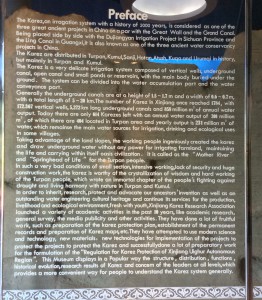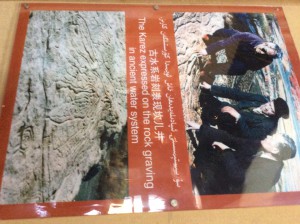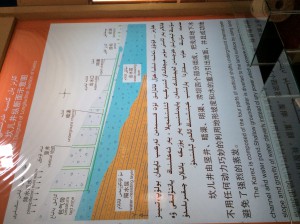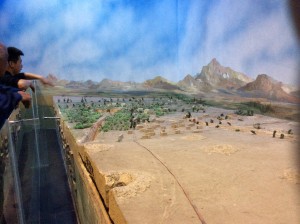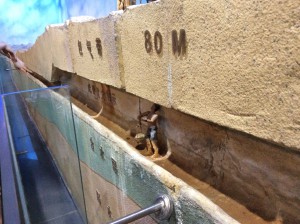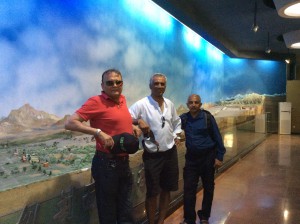We were going to visit a lake, not too far away from Turpan, when we got slightly lost. Found out from a local that the lake was dry anyway, but by now we were off the beaten track, so we did some off piste driving and the LC was more than capable.
However, the main reason for coming to Turpan was to visit the museum, demonstrating the endless underground water irrigating channels, built nearly 2000 years ago, and which provides water and with it life, to this region.
Peter wanted to convey some of this information by post to friends in the UK.
The Underground Irrigation System:
Karez water system is an irrigation system adapted by local people to solve the problem of water supply. This refers to special wells which are linked by underground tunnels and provide irrigation in the desert. This method of irrigation was passed on to Xinjiang people during the Western Han Dynasty (206 B.C. – A.D. 24). The wells were sunk at varying distances to a dozen or several dozen meters deep to collect undercurrent water from melting snow. The water is then channelled through tunnels dug from the bottom of one well to the next and led to oases for irrigation. Most of such irrigation tunnels stretch for some three kilometres, but some extend as far as thirty kilometres. There are about 1,100 such wells in the area embracing Hami and the Turpan Depression. Today, the total length of such underground irrigation tunnels in Xinjiang runs for three thousand kilometres. The project can well be compared with the Great Wall and the Grand Canal. The world-famous grapes of Xinjiang own their excellence to the existence of these wells.
Turpan has a population of 275,000 with about 21 ethnic minorities. With the Muslim community forming a large part of the population. It was a strategic point on the Silk Road.

